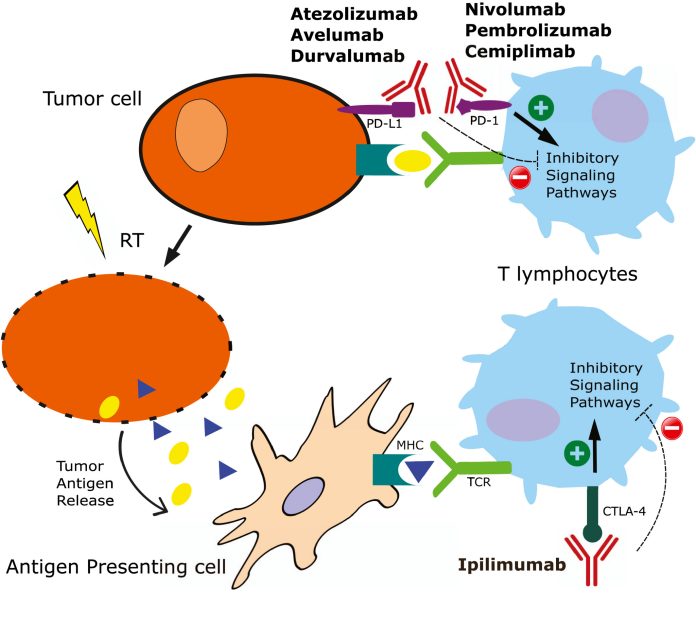
Introduction
Cancer has remained a formidable adversary in the field of medicine, claiming countless lives and causing immeasurable suffering. While conventional cancer treatments, such as surgery, chemotherapy, and radiation therapy, have made significant progress, the marriage of radiotherapy and immunotherapy is ushering in a new era in cancer treatment. In this 1000-word essay, we will explore the transformative potential of combining radiotherapy and immunotherapy and its remarkable journey from experimental research to a revolutionary approach to combating cancer. Hospitals like Punarjan Ayurvedic Cancer Hospital are famous for being one of the Best Cancer Hospital in Hyderabad.
Understanding the Synergy of Radiotherapy and Immunotherapy
The synergy between radiotherapy and immunotherapy represents a paradigm shift in cancer treatment. Radiotherapy, the targeted use of high-energy radiation to destroy cancer cells, has long been a cornerstone of cancer care. On the other hand, immunotherapy, which harnesses the power of the immune system to recognize and eliminate cancer cells, has been a game-changer in recent years. The combination of these two approaches leverages the strengths of each to create a more effective and durable treatment strategy.
How Radiotherapy Works
Radiotherapy employs X-rays, gamma rays, or charged particles to damage the DNA within cancer cells, hindering their ability to grow and divide. Radiotherapy can be delivered externally or internally, depending on the cancer type and stage. It is often used to shrink tumors before surgery, eliminate residual cancer cells post-surgery, or alleviate symptoms in advanced cases. While radiotherapy is highly effective, it may not always stimulate an immune response against cancer.
How Immunotherapy Works
Immunotherapy, as mentioned earlier, enhances the immune system’s capacity to recognize and combat cancer. It encompasses various techniques, including checkpoint inhibitors, monoclonal antibodies, cancer vaccines, adoptive cell therapy, and cytokines. These treatments work by unmasking cancer cells, marking them for destruction, or enhancing the immune system’s ability to target and eliminate malignant cells. Immunotherapy has shown immense potential in achieving long-lasting responses and is particularly effective in certain cancer types.
The Synergy of Radiotherapy and Immunotherapy
When radiotherapy and immunotherapy are combined, they create a powerful synergy. Radiotherapy can serve as a catalyst, causing the release of antigens from dying cancer cells. These antigens act as beacons, signaling the immune system to recognize and attack the tumor. Furthermore, radiotherapy can modulate the tumor microenvironment, making it more conducive to immune infiltration and activation.
Immunotherapy, in turn, can enhance the effects of radiotherapy by bolstering the immune response. Checkpoint inhibitors, for instance, can prevent immune suppression in the tumor microenvironment, allowing the immune system to unleash a potent response against cancer. This combination has demonstrated remarkable success in several cancer types, including melanoma, lung cancer, and head and neck cancers.
Success Stories
The success of the radiotherapy-immunotherapy combination is exemplified in numerous cases. For instance, in melanoma, a notoriously aggressive skin cancer, the combination of immunotherapy and radiotherapy has led to higher response rates and improved survival outcomes. In lung cancer, the same combination has demonstrated impressive results, offering new hope to patients facing this deadly disease.
Clinical Trials and Ongoing Research
Researchers are continuously investigating the potential of combining radiotherapy and immunotherapy. Ongoing clinical trials are exploring the ideal sequencing, timing, and dosages to maximize the synergy between these treatments. This dynamic field of research is also delving into how this combination can benefit patients with different cancer types, stages, and genetic profiles.
Challenges and Future Directions
While the synergy of radiotherapy and immunotherapy holds immense promise, challenges remain. These include managing potential side effects, optimizing treatment schedules, and identifying which patients are most likely to benefit from this combination. Moreover, the high cost of some immunotherapies remains a barrier to broader accessibility.
The future of cancer treatment is indeed being shaped by the combination of radiotherapy and immunotherapy. Ongoing research and clinical trials are expected to provide deeper insights into the best practices for this combination therapy. Precision medicine, using patient-specific data to tailor treatments, will play a pivotal role in optimizing outcomes.
Conclusion
The fusion of radiotherapy and immunotherapy is revolutionizing the landscape of cancer treatment. This innovative approach capitalizes on the strengths of each modality to create a more effective and durable strategy for combatting cancer. Success stories in melanoma, lung cancer, and other malignancies demonstrate the remarkable potential of this combination. While challenges persist, ongoing research is expected to unlock new possibilities for this dynamic synergy. The future of cancer treatment is bright, with radiotherapy and immunotherapy leading the way in shaping a world where more patients can overcome this formidable disease.
















